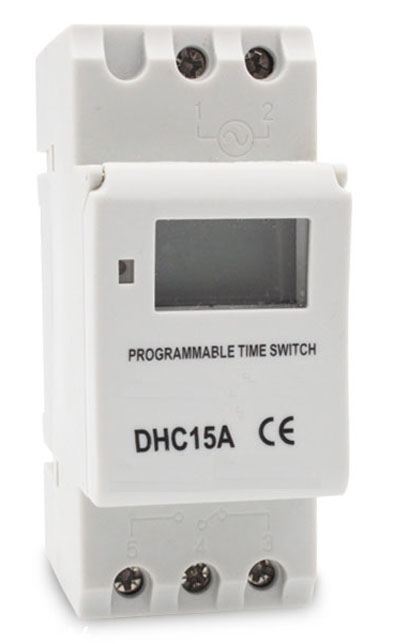Ethernet system single-chip (SoC) design has become increasingly complex, and traditional circuit and function simulation verification methods are becoming slower and more resource-intensive. Hardware simulation technology offers a more efficient alternative, as it can handle large-scale verification tasks and support multiple users simultaneously. Compared to software-based simulations, hardware emulation provides faster and more accurate results, significantly improving the productivity of SoC designers.
WirtuaLAB, an Ethernet software solution, offers a fully integrated environment for generating, transmitting, and analyzing Ethernet packets. This tool is used to test Ethernet SoCs mapped onto hardware emulation platforms. As the demand for connectivity continues to grow, the Internet has become the primary communication channel for billions of people worldwide. According to "Internet Live Stats," global internet coverage reached 3 billion in 2014, representing about 40% of the world's population.
The Internet supports a wide range of data communication services, including email, video downloads, Google searches, Twitter messages, and Skype calls. Table 1 outlines the volume of major online activities on a daily and per-second basis.
![With the hardware simulator "bold" Ethernet SoC test to "stable"]
(https://i.bosscdn.com/blog/11/0U/51/N6_0.jpg)
The origins of the Internet can be traced back to a series of technological breakthroughs that occurred over several decades. From the 1960s, developments in packet switching, communication protocols, and telecommunications laid the foundation for modern networking. Xerox Palo Alto Research Laboratory played a key role by developing the Ethernet standard specifically for local area networks (LANs), based on TCP/IP protocols.
The rise of personal computers helped expand the Internet beyond military and academic institutions, making it accessible to millions of users. Today, the Internet connects over 3 billion people, transforming how we communicate, work, and access information.
In network terminology, all devices connected to a network are referred to as nodes. In the simplest network configuration, these nodes are connected through a hub, which broadcasts incoming data packets to all other connected devices. However, this approach leads to several limitations when scaling up.
![With the hardware simulator "bold" Ethernet SoC test to "stable"]
(https://i.bosscdn.com/blog/11/0Z/26/343_0.jpg)
Figure 1: A typical hub-based network configuration.
Hub-based networks face several challenges when expanding, including limited bandwidth, increased latency, potential network failures, and packet collisions. To address these issues, the industry introduced more advanced devices such as switches and routers. These technologies help preserve bandwidth, reduce latency, prevent network failures, and minimize collisions.
Ethernet Network SoC Case Study
Since its invention in 1989, the Seven Mile Ethernet switch has evolved to handle high-speed traffic. Modern Ethernet switches and routers now support up to 256 ports, with future models expected to reach 1024 ports. These devices can manage traffic rates ranging from 1 Gbps to 100 Gbps or even higher. Although the number of ports is expected to increase, bandwidth growth may be constrained by transmission media limitations. As a result, parallel processing techniques are being used to boost performance.
Latency in network switching has also decreased significantly, with current minimum latencies falling below 1 microsecond. Modern network switches and routers are among the most complex integrated circuits, featuring over 500 million logic gates—ranking them among the largest processors and graphics chips.
These SoCs typically include a 128-port Ethernet interface and support various connection speeds, such as 1 Gbps, 10 Gbps, 40 Gbps, 100 Gbps, and 120 Gbps. Verifying such a complex IC before manufacturing is a challenging task.
At the block level, HDL simulations can be effective, but they are not feasible for verifying entire designs with hundreds of millions of gates. This is where hardware simulation in in-circuit emulation (ICE) mode becomes essential.
This method allows real-world traffic to be used for testing. For each setup, an Ethernet tester is required. Due to the significant speed difference between the tester and the device under test (DUT), a rate adapter is inserted between them. This ensures that the tester’s high speed is adjusted to match the DUT’s lower speed.
For a design with 128 ports, 128 Ethernet testers and 128 rate adapters are needed, along with extensive cabling (Figure 2). Beyond the complexity of wiring and potential hardware instability, the main limitation is that only one user can access the system at a time in the simulation lab.
![With the hardware simulator "bold" Ethernet SoC test to "stable"]
(https://i.bosscdn.com/blog/11/09/24/9457_0.jpg)
Figure 2: The 1/10/40/100/120 Gbps Ethernet switch is tested using in-circuit emulation (ICE).
Digital Timer automatically turns the power of various powered devices on and off according to the time set by the user. The control object can be a street lamp, a neon lamp, an advertising sign lamp, a production device, a broadcast television device, and the like, and all power devices and household appliances that need to be turned on and off periodically. Built-in 1.2V/40mA can be charged, high precision, industrial grade chip, strong anti-interference.

Timer Relays,Time Delay Relay,Digital Timer Switch,24 Hr Timer Relay
Ningbo Bond Industrial Electric Co., Ltd. , https://www.bondelectro.com